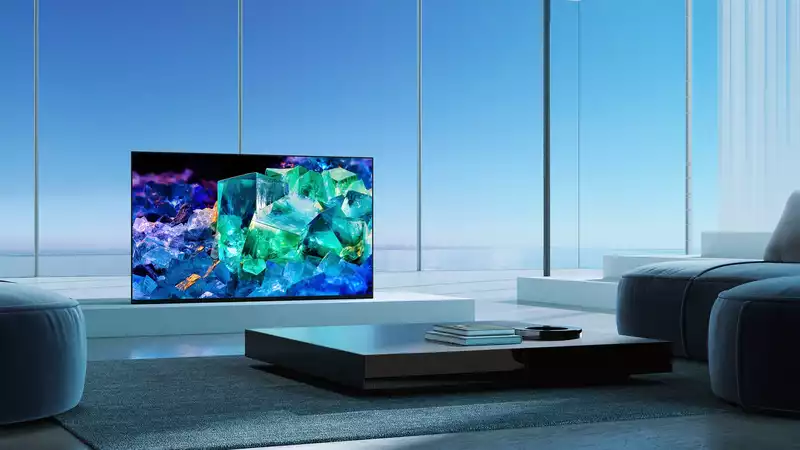Sony has improved its Bravia XR series TVs to compete with rivals LG and Samsung at the 2022 CES. Equipped with the latest XR processor, Sony's Bravia XR TVs offer improved image processing power, combined with the latest mini-LED technology.
Not only that, Sony is upgrading its OLED game with QD-OLED technology in its upcoming Master Series 4K A95K. this is the first announcement of a QD-OLED TV.
Sony is not completely discontinuing OLEDs or standard full-array LEDs, but will instead replace some full-array units with mini LED sets.
Unlike Samsung and LG, Sony is not a major panel manufacturer; it orders OLED panels from LG and some LCD panels from Samsung and others. Thanks to its extensive experience in cinematography and film production, Sony differentiates itself in image processing.
Essentially, Sony is trying to set itself apart from panel makers by creating the best possible images with display technology from other companies.
For gamers, the PS5 can detect individual Sony TV models and adjust HDR settings accordingly. The BRAVIA XR processor can also automatically switch between game mode and standard mode depending on the type of content being played on the PS5. Playing Gran Turismo 7. Game mode. 4K Blu-ray being played. Game mode off. No need to bother tweaking the settings.
This year, Sony will introduce the A95K line of QD-OLED TVs. With Sony's XR Triluminos Max color processing, the TV maker claims to be able to display a full spectrum of colors in even the brightest scenes compared to "traditional OLEDs." It is not clear whether Sony is referring to LG's OLED TVs or OLED displays in general. Either way, Sony has eliminated white phosphors from the set, meaning that there is no color dilution even in the brightest images.
Sony claims to be able to achieve deeper greens and reds through its own rudimentary color-shifting method. Also, like Samsung's upcoming QD-OLED, which will throw a quantum dot layer on top of the OLED array, Sony will do the same with the A95K. This should result in a better spread of light and color from each pixel to the entire panel, resulting in a more vivid and brighter image.
It remains to be seen how this quantum dot + OLED method will compare to LG's new EX line of TVs, which use deuterium compounds to achieve brighter images.
Again, in Sony's case, it is all about image processing. Sony's OLEDs will feature CPXR, a technology that better controls depth so that objects look better in 3D space. It preserves positioning while avoiding over-sharpening background objects.
In the area of Mini LEDs, Sony's XR Blacklight Master Drive system aims to reduce the visibility of zones; Mini LEDs are so bright that small individual zones laid out on a grid become visible and the image edges can appear blocky.
Conventional algorithms may simply reduce the overall brightness to prevent such grids from showing through, but Sony claims that the XR Backlight Master Drive intelligently controls the power of the Mini LEDs to reduce the visibility of individual zones They claim that it can do this. It is not clear whether Sony is blaming Samsung and last year's excellent QN90A Neo QLED or all Mini LED TV manufacturers, including TCL and LG.
Sony is touting Netflix Adaptive Calibrated Mode as part of its new TV line. This mode is designed for the creative intent of Netflix content. This mode is designed for the creative intent of Netflix content and automatically calibrates the picture for better color tones based on the surrounding environment.
Sony TVs include Google TV, which works with Apple AirPlay. There is also a hands-free voice search function.
The Sony Bravia Cam is a camera and ambient sensor that can be placed on top of all Sony TVs released in 2022. It will be bundled with the Z9K Mini LED and A95K QD-OLED TVs and will also be sold separately for those who wish to add the feature to their TVs.
The Bravia Cam is a webcam that can detect a person's position and adjust image and audio accordingly. Sony calls this Ambient Optimization Pro. This means that if a person is not sitting exactly in the center viewing angle, the TV will make adjustments to the image and stereo mix to account for this. It also has a slider at the top that covers the camera lens for those concerned about privacy.
This accessory, which connects via USB and attaches magnetically to the back of the device, allows gesture control of basic functions such as power on/off, volume adjustment, and playback pause, and has a proximity alert. This last feature is useful when children are present, and the TV informs the user to keep their distance in full screen. The TV also dims when it notices someone has walked away, to save power.
The new premium remote control will be included with the Z9K Mini LED, A95K QD-OLED, and A90K OLED TVs. These remotes will be 36% smaller than last year's and will feature backlighting. It also includes an OK Google feature for quickly finding the remote control.
Sony has reduced the number of keys from 49 to 25 and removed the numeric keys altogether. The keys are integrated into a new keypad UI. The remote control also has a flush design for easy cleaning ...
.









Comments